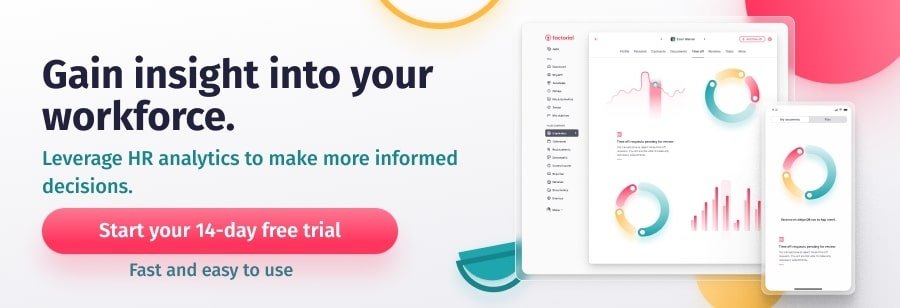Using Objectives and Key Results (OKRs) is a way to plan and manage goals better. More small and medium-sized businesses are using OKR’s due to their usefulness and efficacy. An OKR template is a fantastic tool that assists the Human Resources Department in meeting their objectives in less time and less effort.
✅ Download the Excel OKR Template
In essence, when working with OKRs the Key Results (KR) are classified by the HR goals the company or department wants to achieve. The difference with other systems is in how clear that objectives are detailed and the steps required to reach them. OKR’s are more than simply a route for which the company can clearly evaluate which objectives they want to meet.
What are the OKRs
OKR, Objectives and Key Results, are defined as the technique to plan and establish goals in any department or within the company as a whole. This system became popular thanks to Intel and Google, two of the largest companies using the OKR system. Also, the system itself is incredibly simple to use, which makes it even more accessible as a tool. All you really have to do is write your objectives down and chart a path of defining the quantifiable actions to meet them.
Here are some of the main characteristics your OKRs for hr should have:
- Quantifiable: All OKRs for hr should be quantifiable and measurable. “Get more clients” isn’t measurable. Every Key Result must be accompanied by a number, either a fixed quantity, a percentage or a date. Make sure you can measure your results.
- Qualified: Establish a time for when you want to meet your OKR. At the end of the quarter or the year, set a note for each objective where 0 is “not even close” and 1 is “objective met”.
- Public: All goals must be accessible and common knowledge to everyone in the company. Not only directors or the OKR HR manager, but every employee should also know them. Visibility furthers collaborations between individuals and departments and offers a clear vision and direction to help meet the collective goals.
- Ambition: It’s always better to fall short than reach something backed by ambition. If your team or company doesn’t find it challenging to meet their goals, it may be worth asking, are you reaching far enough? HR OKRs should be ambitious and require focus and commitment to reach. The key is to think big and be fearless.
How to apply the OKR methodology to your SMB?
Applying this methodology to your SMB is really easy!
One of the things that distinguish OKR from other planning strategies is that objectives are discussed in a circular way between the employees and the directors. Also, at least half of the goals are proposed by the employees. This means that employees are able to be a part of the refining process. The ideal is to define from 3 to 5 ambitious, but realistic, objectives. After the objectives are set, you can detail the steps required to reach them. For each goal, it’s advisable to apply at least two measurable outcomes when using the OKR methodology.
For example:
Objective: Improve employee engagement and happiness within the company.
KR1: Plan 3 team meetings every month focused on motivating staff.
KR2: Interview 15 employees to better know their needs, worries, struggles.
KR3: Offer 2 yoga classes each month to the employees as a benefit.
KR4: Pass around a satisfaction survey each month and apply suggestions so you can improve satisfaction by 10%.
What you see above, is an example of a quarterly objective. Every three months, an evaluation of the KR must be conducted to determine the qualifications of the goal (0-1). If the final number is close to 1 the objectives have been reached!
OKRs for Human Resources, the best way to meet your objectives efficiently
When implementing a plan for the department of human resources it is very important to keep in mind that your OKRs for human resources must be aligned with the general goals of the company. The HR Plan must be designed to be a part of the bigger picture.
If you need some OKR examples for the Human Resources department, here you’ll find a few:
1. Talent Acquisition (using OKRs for recruiting)
Objective: Recruit and retain employees to satisfy company needs.
KR1: Increase the percentage of active open positions in the company’s job board.
KR2: Reach a higher than 75% employee retention rate.
KR3: Decrease the percentage of open positions for managers in the HR department.
2. Employee motivation and loyalty
Objective: Improve employee compensation without increasing company costs to motivate employees and promote company loyalty.
KR1: Activate 3 flexible retribution plans before the month ends.
KR2: Offer 1 benefit to all company employees.
KR3: Offer courses and training to the employees.
3.Company Culture
Objective: Maintain a positive work environment based on company values.
KR1: Increase the percentage by 20% of employees that agree there is a positive work environment.
KR2: By the end of the year, create a space of relaxation where employees can go to relax.
4.HR department efficiency
Objectives: Decrease the time required to manage holidays and leaves administration.
KR1: Implement software to manage company leaves before Christmas.
KR2: Spend 50% less time processing and approving employee leaves.
KR3: Spend 4 hours less managing leaves thanks to Factorial’s HR software without increasing response time.
If you want to work smarter, improve your workplace environment and spend less time managing documents, take a look at what Factorial HR can do for you.
How can this OKR Excel Human Resources Template help you?
With this free Human Resources OKR excel template, meet your OKR for human resources objectives in less time and with little effort. In Factorial we’ve created this free excel OKR template especially for the companies that want to improve their human resources management. The template also allows you to improve your day-to-day human resources processes.
Download the Free OKR Excel Template: Human-Resources-OKR-Template-By-Factorial, and start detailing your human Resources objectives with the OKR system!
But, to meet your objectives you need time!


